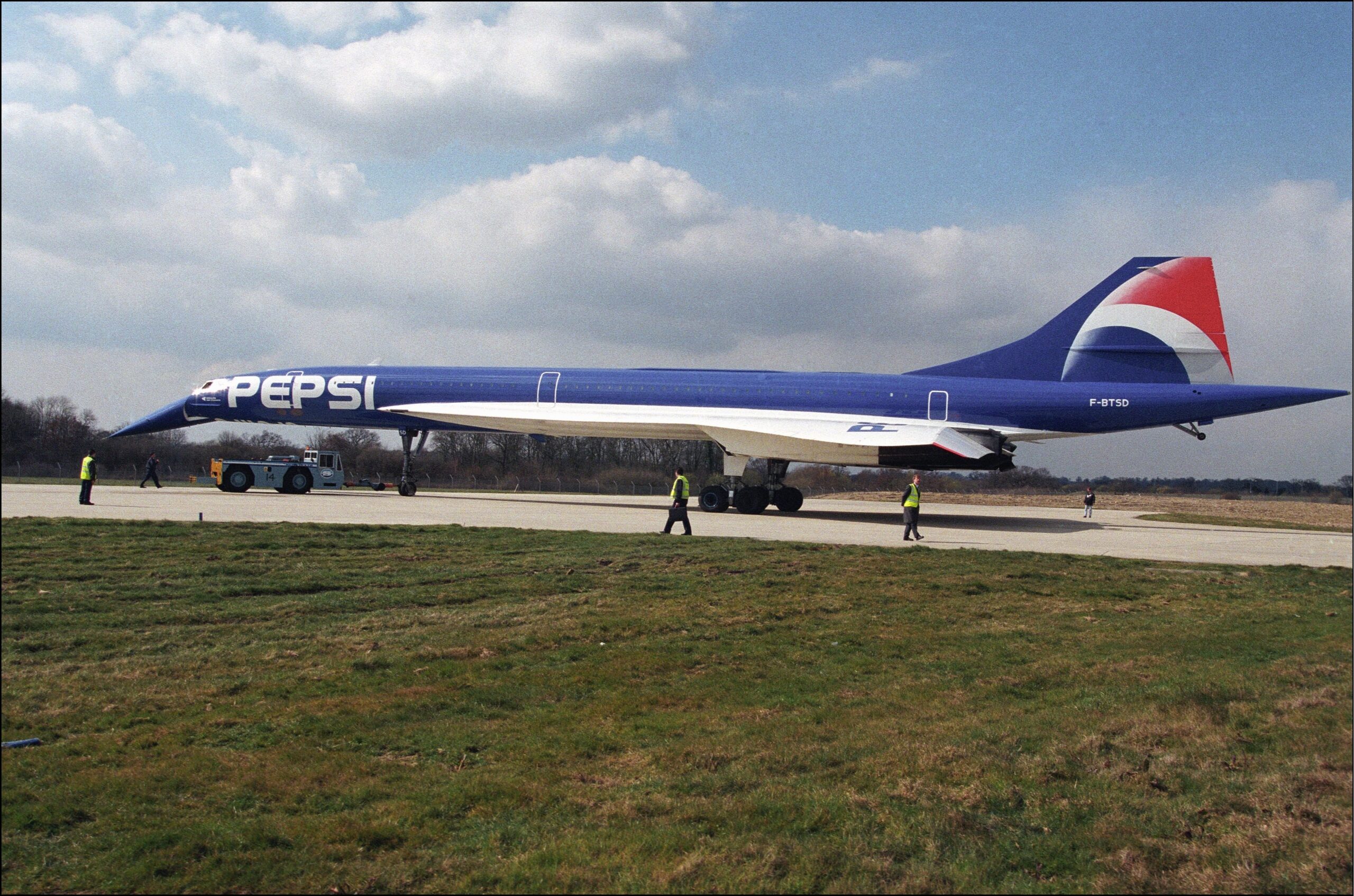Concorde was a special aircraft that stood apart from contemporary subsonic airliners in terms of both its performance and aesthetics. However, for a brief period, there was one particular example that was even more striking in its appearance than its supersonic classmates. This aircraft belonged to Air France. For two weeks in 1996, it bore a unique, blue livery as part of an advertising deal with soft drinks giant Pepsi.

Blue is the color
The promotional livery came about at a time when Pepsi was rebranding its products with a new color scheme. This was, of course, the blue, red, and white combination that is instantly recognizable today. In order to bring this to the attention of the world’s population, the soft drinks giant embarked on a $500 million marketing project. The Independent described this move as “a bold, perhaps desperate gamble.”
One aspect of this expensive marketing drive was to repaint a supersonic BAC/Aérospatiale Concorde airliner in Pepsi’s new color scheme. As one of the most revered and exclusive airliners in the skies at the time, this was sure to be a bold statement that would draw extensive publicity for the company.
The Aviation Geek Club reports that Pepsi approached both Concorde operators, Air France and British Airways, with its audacious proposal. A promotional deal was eventually agreed with the French flag carrier. Over a two-week period in March and April 1996, the aircraft operated 16 flights in its conspicuous temporary livery.

Impact on performance
The aesthetics of the Pepsi livery are, as with all art, open to interpretation. However, what is inarguable is the impact that it had on Concorde’s performance. During the supersonic flight that set the aircraft apart from contemporary subsonic airliners, it was subjected to extremely high temperatures. In order to deflect some of this heat, Concorde’s hull was painted with highly reflective white paint. This prevented overheating and damage to the aircraft’s aluminum structure.
However, in the blue Pepsi livery, Concorde no longer had such protection. As such, the aircraft in question could only fly at Mach 2.0 (2,470km/h or 1,535mph) for 20 minutes at a time. Otherwise, issues related to overheating could have arisen. Supersonic flight at speeds of Mach 1.7 (2,100km/h or 1,300mph) or below was unrestricted. Due to these restrictions, Air France selected an aircraft that was not scheduled for any flights with extended periods at Mach 2.0 during the promotional period.

The aircraft in question
The aircraft that Air France utilized in its promotional deal with Pepsi bore the registration F-BTSD. According to Planespotters.net, Air France took delivery of this aircraft in September 1978. For a brief period (January-March 1979), it also operated domestic flights between Washington, D.C and Dallas for American carrier Braniff International Airways.
Air France retired its Concorde aircraft before British Airways. The crash of Air France flight 4590 in Paris in 2000, the post-9/11 slump in air travel, and particularly the aircraft’s inefficiency and general high operating costs were all factors in the type’s retirement. F-BTSD specifically was withdrawn from service on May 31st, 2003, after almost 25 years of service. Since June 2003, it has been preserved at Paris-Le Bourget Airport’s Air and Space Museum.
[ad_2]
Source link


